After New York State Electric and Gas did their thing, drop-standing trees that threatened the power lines, they left behind some beautiful timber.
Usually, I just mill different species of hardwood, but this time around I milled pine/coniferous trees/. Pine is the type of lumber used for framing houses, garages, sheds, and all types of stick-built structures. The boards that I would be milling I will be using to build a garage next year for our tractor and 4-wheelers.
Not having milled at all last year I wanted to make sure the mill was ready to Rock And Roll.
Servicing the mill included changing the oil and filter, installing a new gas filter, greasing the dozens of fittings, adjusting the band wheels that keep the bandsaw blade tracking true, and lubricating the tracks that the carriage rides on. This took the better part of a day. The following day all I had to do was hook it up to the quad and tow it to its new resting place.
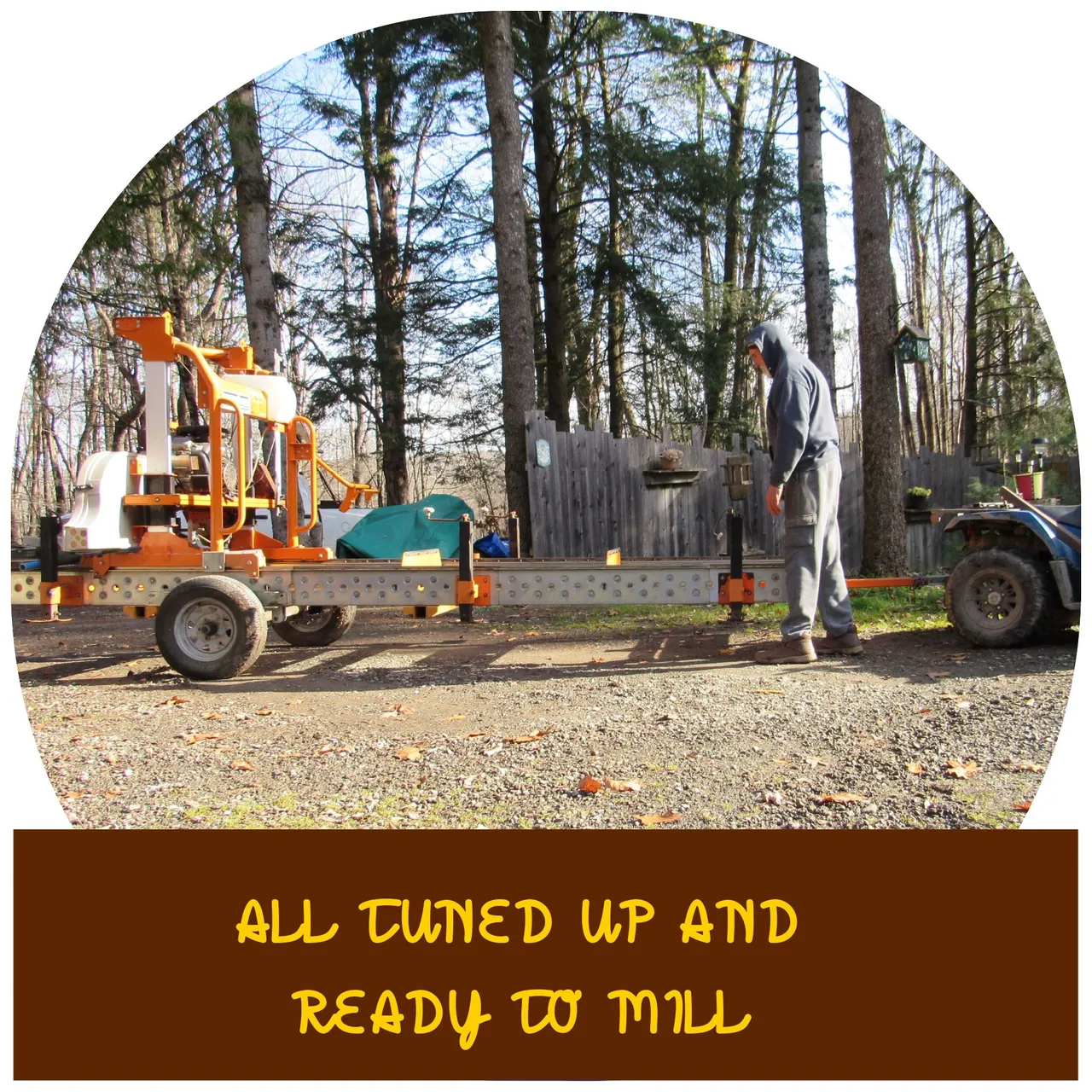
Setting the mill up took about an hour. The key to milling uniform dimensional lumber is to make sure that the mill is perfectly level and set on a solid base.
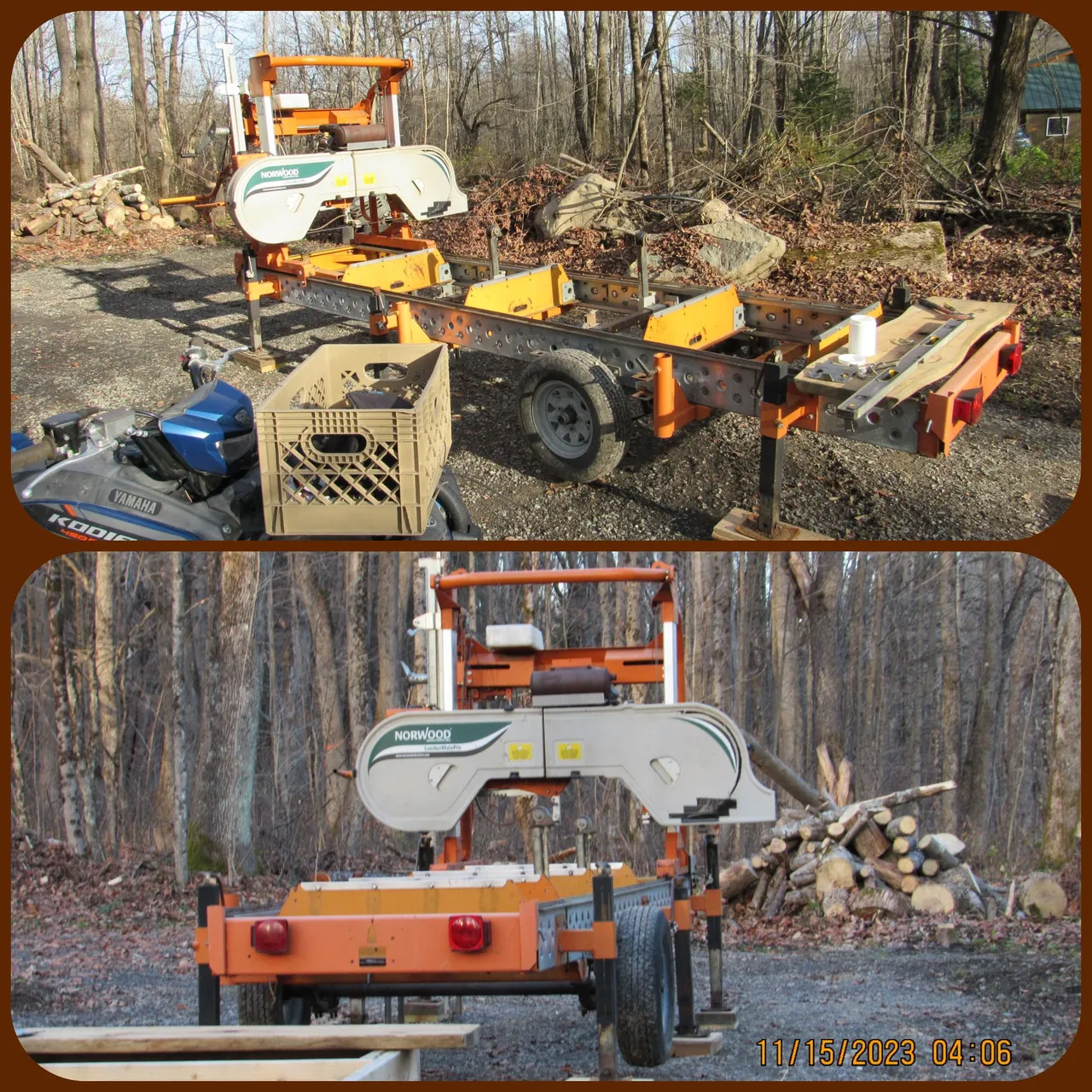
Here is where it got exciting. This was the 1st time I would be dropping the front bucket and attaching the pallet forks.

Changing from the bucket to the forks was as simple as I was told it would be. Within a few minutes, I was trucking down the back driveway headed for the mill.
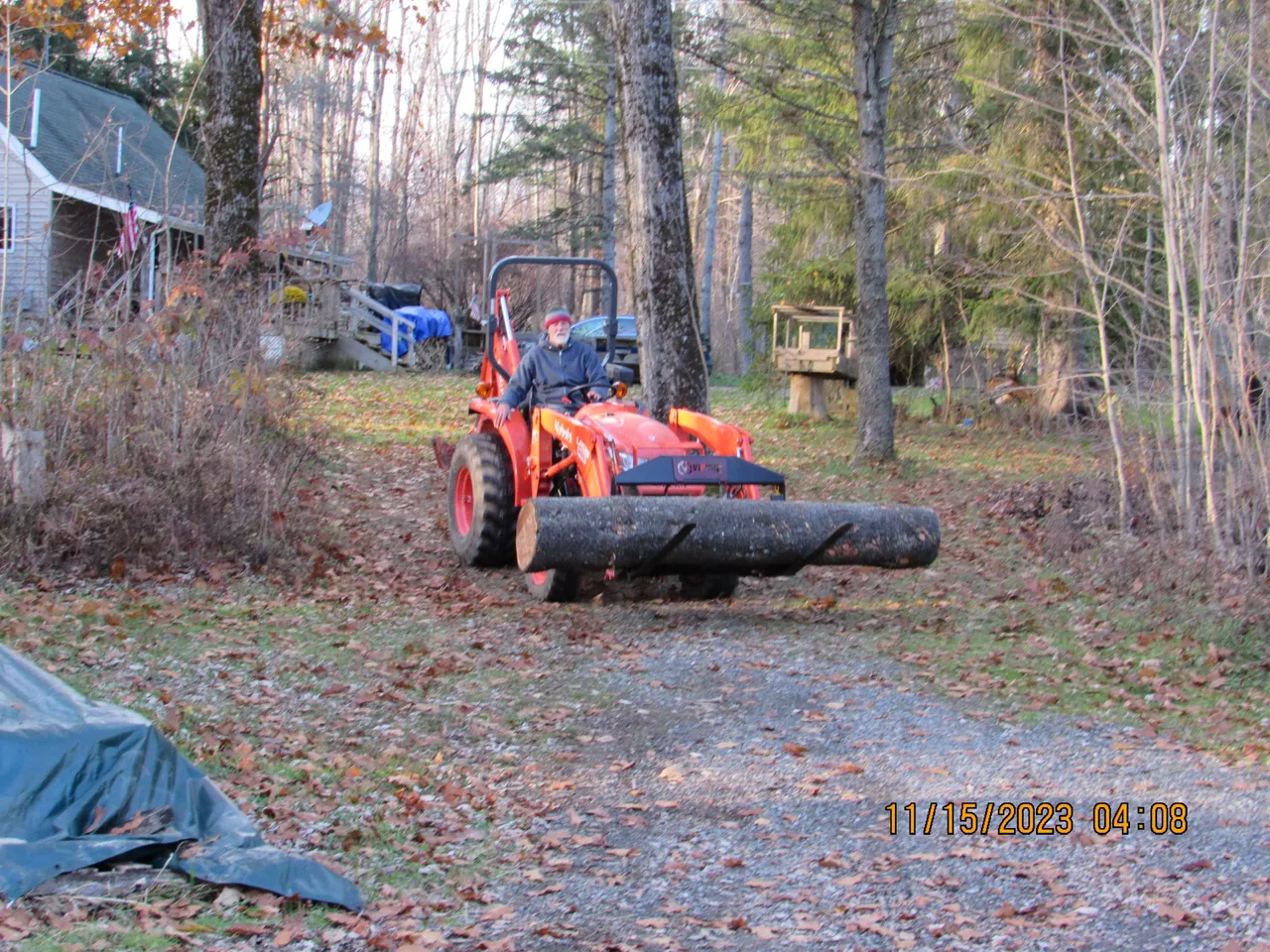
When we purchased the tractor I had mentioned that Andy, the owner of the Kubota dealership took a real liking to my better half.
I can't blame him, Robin is a real sweetheart. I had mentioned to Andy that I was also looking to possibly purchase the pallet forks. He gave me the price which was around $1,300.00. At that price, I told him that purchasing them would have to be done at a later date. His response threw me for a loop. With a twinkle in his eye, he turned to Robin and stated that, just for you I would throw in the forks for free if we decided to sign the contract that day. She smiled back at him and said, where do we sign?
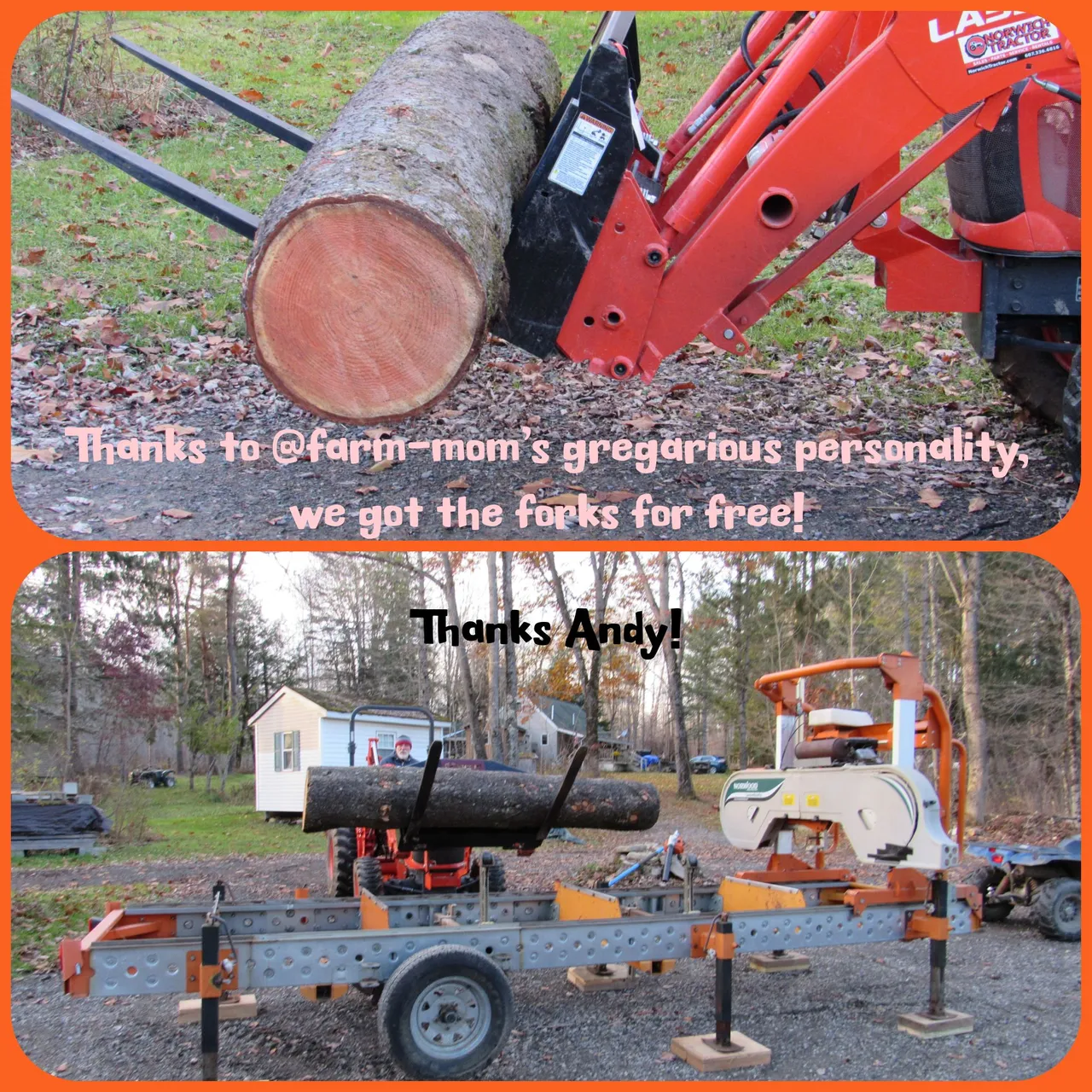
In the past, it took about 45 minutes to load the log onto the bed of the mill, get it into position, and lock it into place. Having the pallet forks made this job very simple and it only took about five minutes to do the same thing.
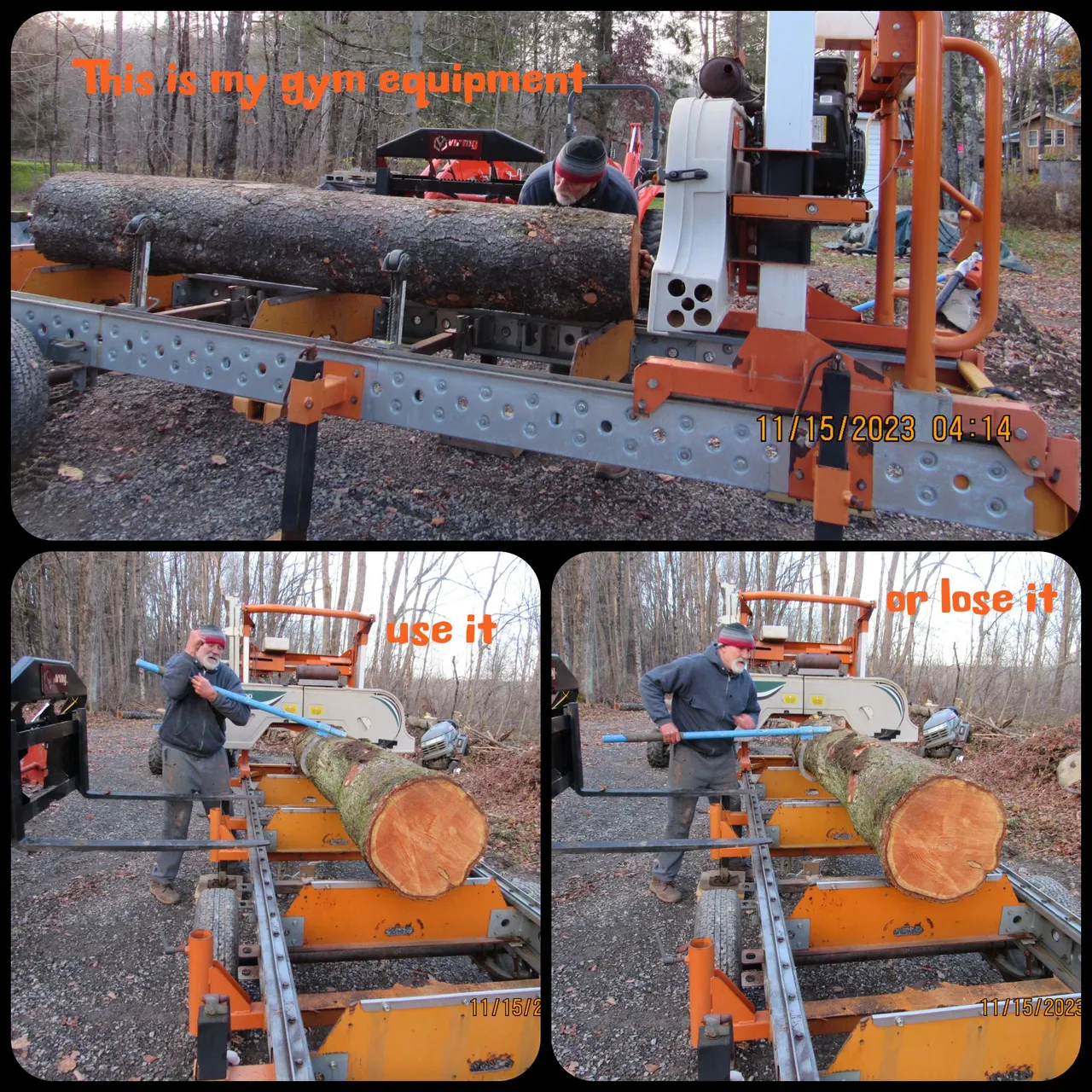
After squaring up the bolt of wood it was time to start cutting some of the lumber for the garage that I will build in the spring, for the tractor and 4-wheelers.

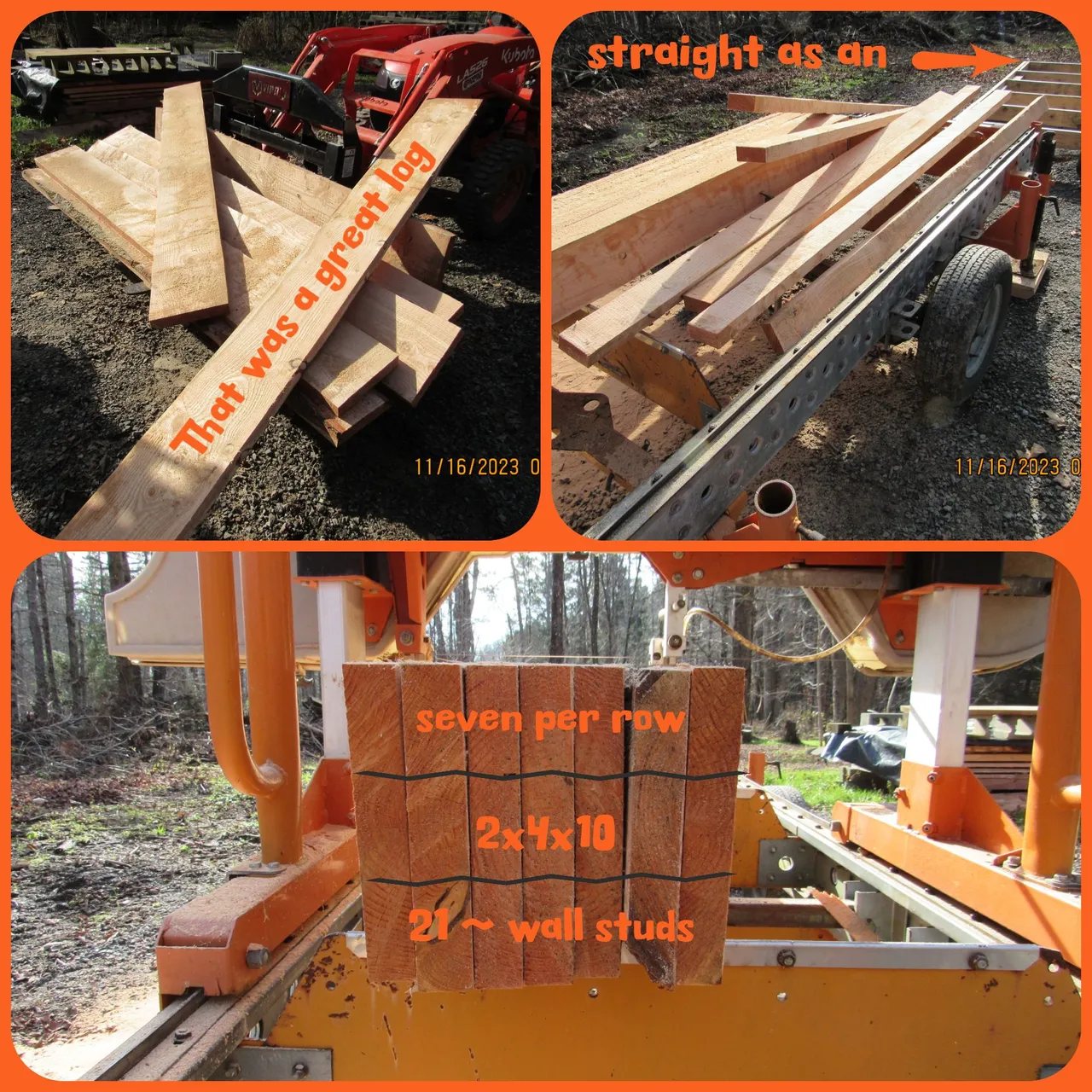
The mill ran like a champ and within an hour I was headed back up the driveway to load up the second of the five bolts that I was going to mill.
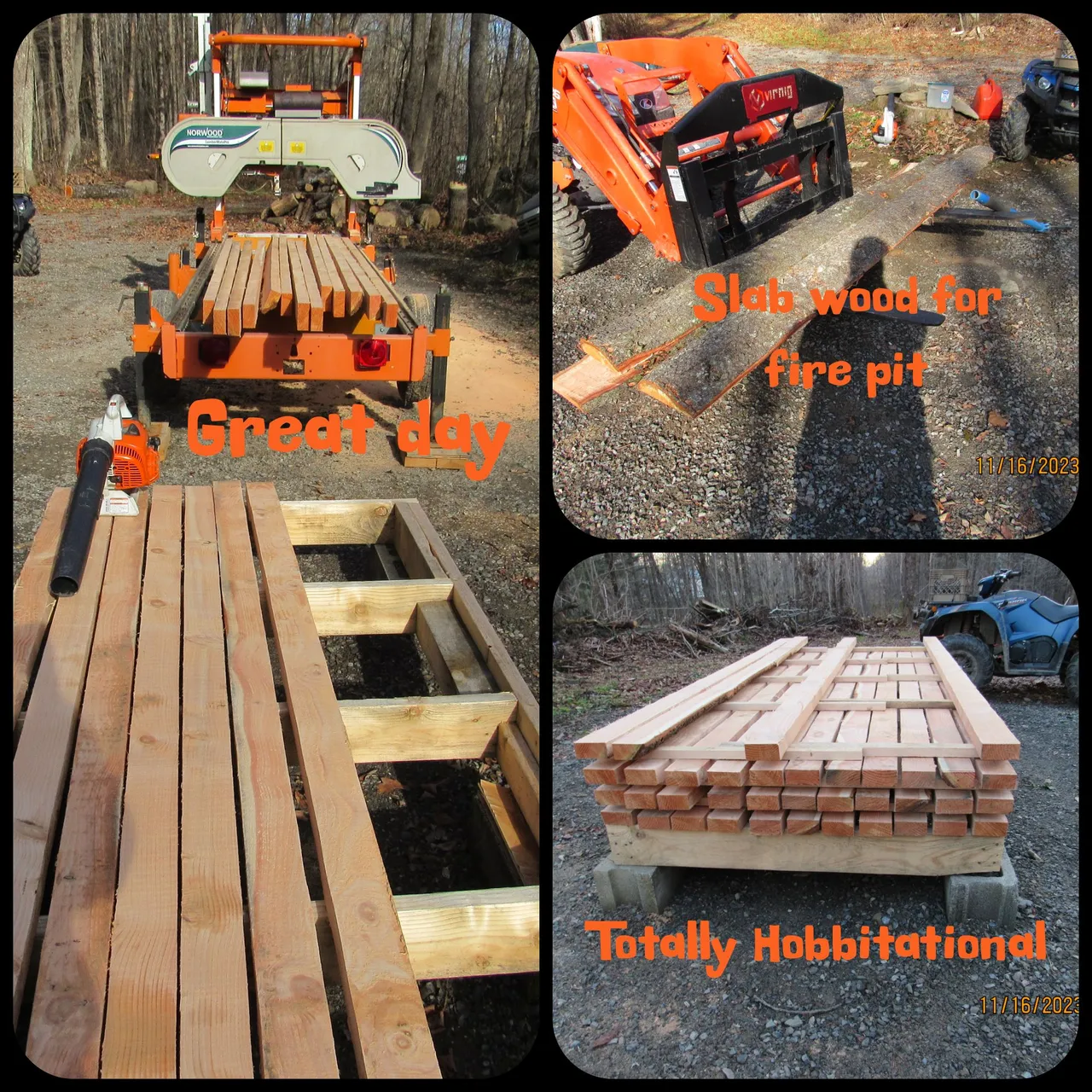
I was hoping to mill all five logs with a blade that had been used before.
It was still very sharp and was cutting all of the lumber true to size. But, as I made the 1st pass through the last bolt I ran into a nail, and the blade was shot. Any hidden metal in a bolt of wood will ruin a blade.
Before cutting any log I always inspect it for any type of metal that may be embedded in the tree.
The nail I hit was there for a while and the tree had grown right around it, hiding it from sight. At the cost of $35.00 per blade, running into any metal in a log gets very expensive. Having several new blades in stock allowed me to change out the old blade and get back to milling without much downtime.
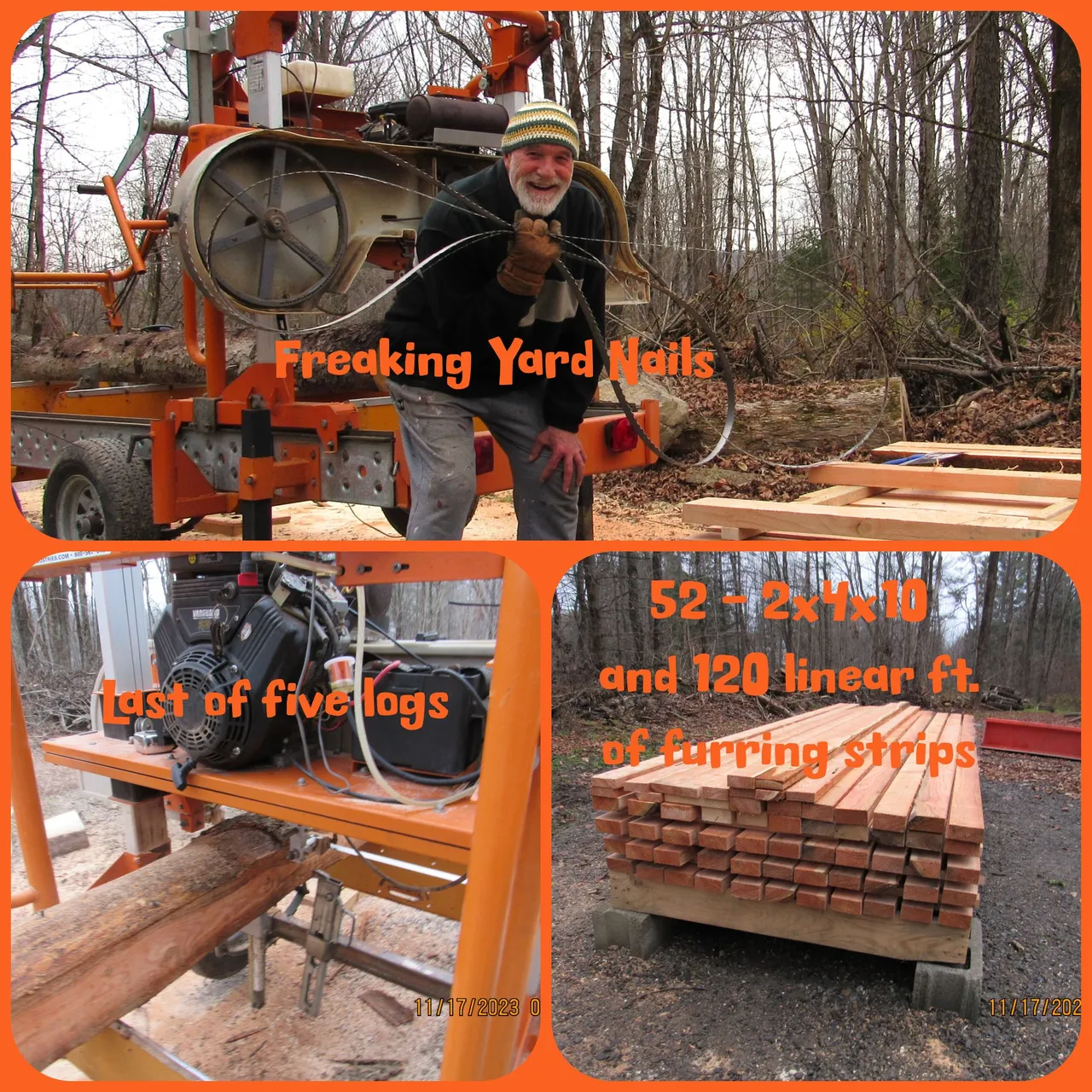
By the time I had finished milling the five logs, I had produced all the lumber I should need for the garage walls. Come Spring time I will mill the remainder of the lumber needed for the rafters, girders, and headers needed to complete the framing of the structure.
If I had to purchase the lumber needed to build the garage, the price of it all would exceed $2,000.00. Producing the lumber I will need should only be a fraction of that price.